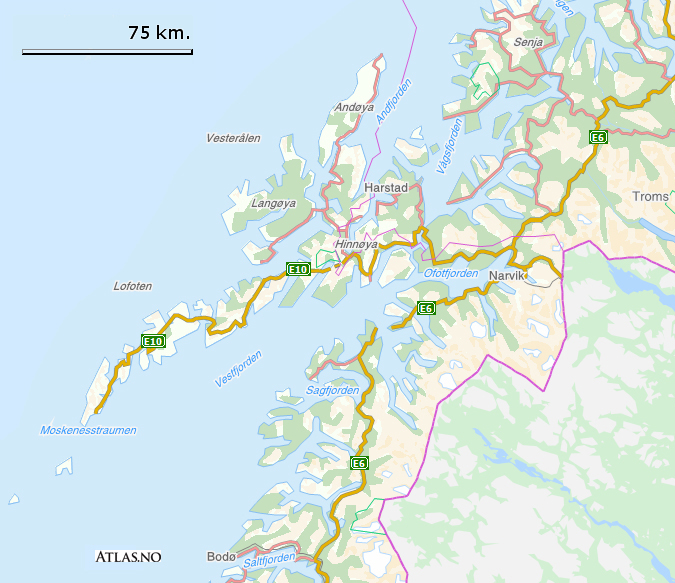Why hike in the Lofoten Islands?
To this question I would simply answer, “Because you find everything hikers dream of concentrated in a limited area!”
It is often said that the Lofoten Islands are a miniature Norway, which is true because all the landscapes you find in mainland Norway are within easy reach.
Outstanding landscapes and light. Here you will find immense white-sand beaches, small ports with brightly coloured houses nestling deep in tiny fjords, narrow valleys with a few isolated farms dotted here and there, green or flowery plateaus, mountain lakes, tumultuous waterfalls, breath-taking snow-capped mountains, all bathed in the northern light of which photographers are so fond. The wide range of landscapes, the ever-present sea and mountains as well as the purity of the light are unique in the world.
Fabulous, wide-open nature. Here the only barrier to unrestricted travel is the mountains. As everywhere in Norway, the few, generally quiet inhabitants here are not sticklers about private property. Many hiking trails pass through farms or alongside isolated houses and if you happen to meet someone they are sure to wish you good day and a good trip in Norwegian. The few sheep fences you encounter always have a ladder or gate nearby which you should always close behind you. This total freedom must not make you forget that the natural environment you are passing through is fragile and unused to large mammals like us.
 Much of the islands is covered with peat that grows slowly at a rate of 1 mm a year! This fragile biotope means you have to be particularly careful and try to walk on the existing paths wherever possible. Sheep – which are the main inhabitants of the wildest parts of the islands – have created a certain number of tracks but beware, they won’t always take you where you want to go.
Much of the islands is covered with peat that grows slowly at a rate of 1 mm a year! This fragile biotope means you have to be particularly careful and try to walk on the existing paths wherever possible. Sheep – which are the main inhabitants of the wildest parts of the islands – have created a certain number of tracks but beware, they won’t always take you where you want to go.




 What makes the Lofoten Islands unique is the combination of landscapes and terrains that are not usually found together. Over 80% of the archipelago consists of a mountain range with its jagged peaks.
What makes the Lofoten Islands unique is the combination of landscapes and terrains that are not usually found together. Over 80% of the archipelago consists of a mountain range with its jagged peaks. The Lofoten Islands, like the rest of Norway, are made up of terrain that is extremely wild and untamed. But this is also what makes them so attractive. But hiking in such terrain is not without its difficulties! In the north of Norway there are few hikers and therefore few paths which is why most hikes are “off track” on rough scree. The thick covering of vegetation conceals the unevenness of the land. Here more than anywhere you should not judge the difficulty of hikes in terms of steep slopes or distance, but in terms of the nature of the terrain which is comparable to high mountain areas.
The Lofoten Islands, like the rest of Norway, are made up of terrain that is extremely wild and untamed. But this is also what makes them so attractive. But hiking in such terrain is not without its difficulties! In the north of Norway there are few hikers and therefore few paths which is why most hikes are “off track” on rough scree. The thick covering of vegetation conceals the unevenness of the land. Here more than anywhere you should not judge the difficulty of hikes in terms of steep slopes or distance, but in terms of the nature of the terrain which is comparable to high mountain areas.